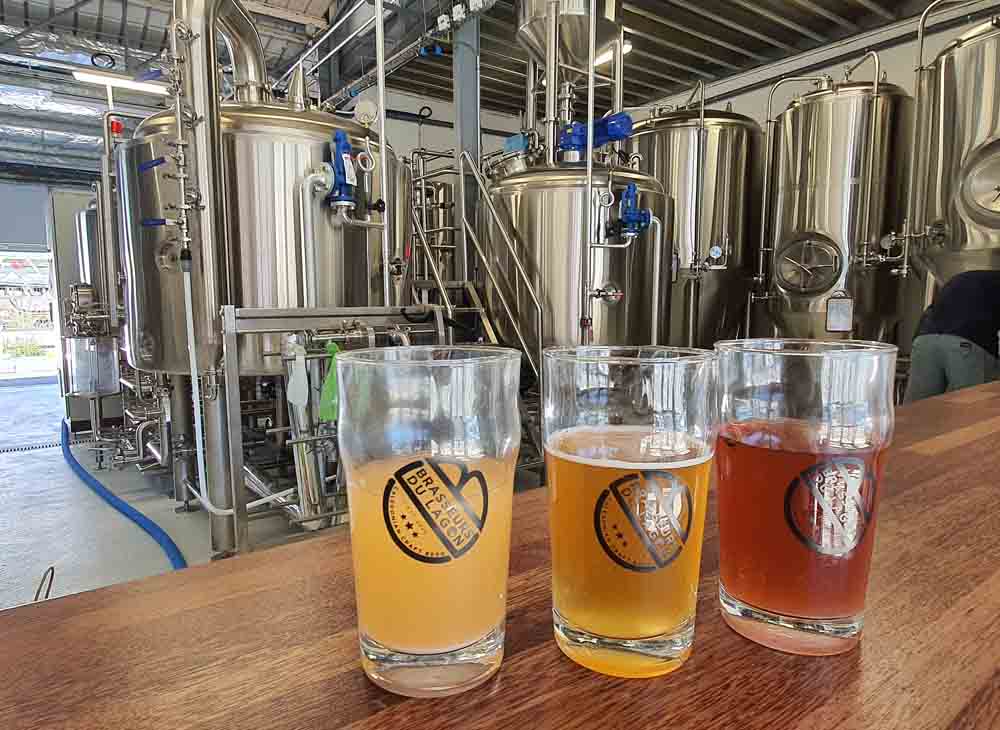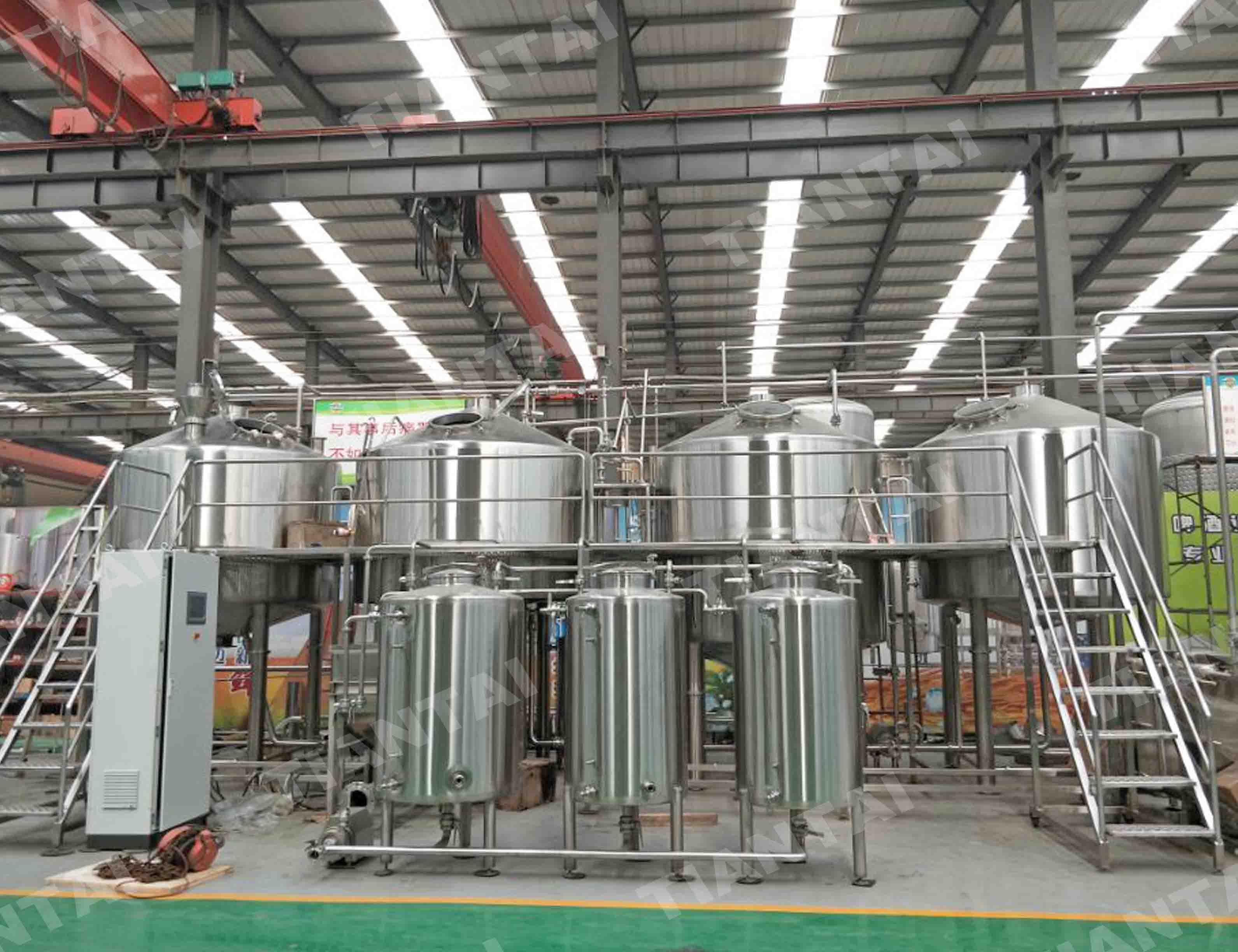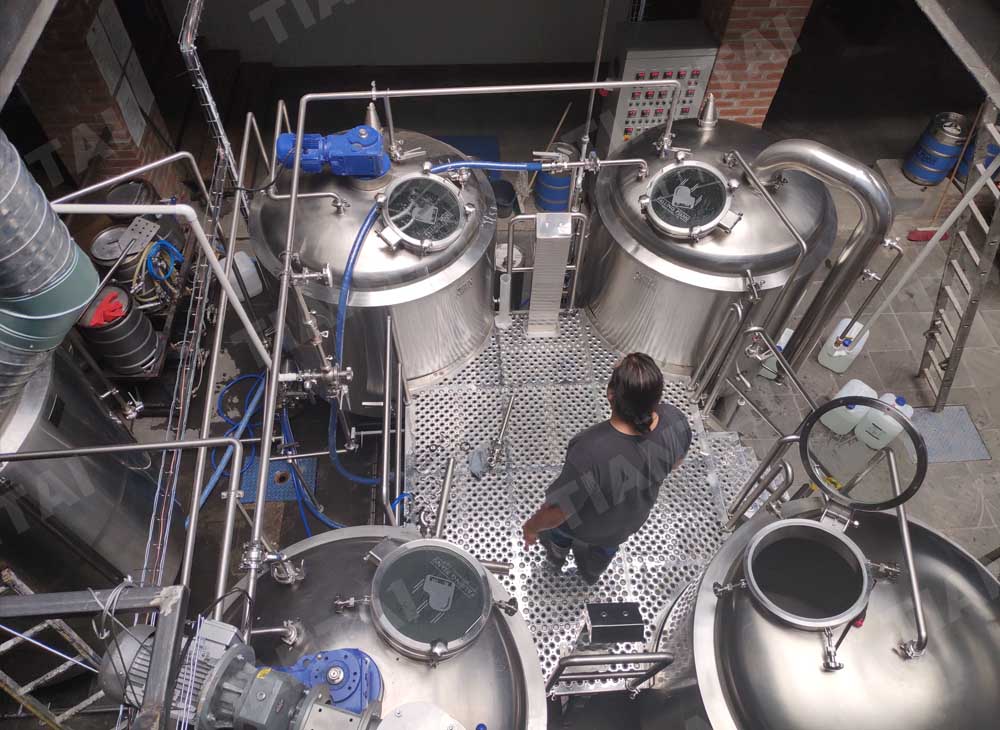Brewing Process The Stages of Brewing Beer
- Sep 11, 2021
- 75
- tiantai
Malting and Milling
Malted barley is barley grains that have started the germination process. The malting process is done so that the enzymes in the grain will form that are necessary for converting the starches in it into sugar.
Milling is a process in which the husk or outer layer of the grain is crushed, and the inner is broken up to allow the mashing liquor to access the entire grain. This is a very crucial step in the process because milling improperly can break a beer before the brewing has even begun. The key is to crush the the grains enough so that it exposes the starchy center of the barley seed without damaging the grain hulls that encase them.
Mashing
Mashing is the brewer’s term for the hot water steeping process which hydrates the barley, activates the malt enzymes, and converts the grain starches into fermentable sugars. Brewers monitor the mash temperatures very closely. The types of sugars that are produced by the enzymes can be controlled by the raising and lowering of the temperature.
.jpg)
Lautering
Lautering is a process in brewing beer in which the mash is separated into two forms; the residual grain and the sugary clear liquid known as wort. Wort gives the beer it’s fundamental flavors, including those of the grains and hops that the brewer’s recipe calls for.
Lautering usually consists of 3 steps:
Mash Out – MashOut makes lautering easier by raising the temperature of the mash. The hotter the mash, the lower the viscosity of the entrained wort and the easier it is to drain it away from the grain solids.
Recirculation – Consists of drawing wort off the bottom of the mash, and adding it to the top. The mash itself acts somewhat like a sand filter to mash debris and proteins.
Sparging – Water is added during lautering to extract more of the fermentable sugars from the grain.
Boiling
After the wort has been separated from the grain by lautering, it is brought to a prolonged boil. This is twofold. First and most importantly boiling sterilizes the beer.
· Fun Fact - Earlier in history when people allowed their clean water and runoff water to comingle, which made the water full of bacteria. These people didn’t know why the water was unsafe to drink but they knew that beer was. Therefore, everyone drank beer, even small children.
Secondly, it is during the boiling process that hops are introduced to the wort. The length of time that the wort is boiled lends to the bitterness of the beer. After the beer is boiled, it is cooled quickly because the beer will begin to oxidize and produce undesirable flavors.
Fermentation
Fermentation mostly takes place in a stainless steel vat. This is when the yeast is added and begins to eat the sugars created during the mash. As the yeast eats the sugar, carbon dioxide and alcohol are expelled. Fermentation time varies in time. If the brewer is producing an ale, the time may only be a few days. However, a lager may take months of fermentation.
Conditioning
During the conditioning period of beer, the yeast becomes dormant and settles out of the beer, collecting at the bottom of the tank. The beer is then filtered to remove any remaining yeast and large proteins.
Packaging
Once conditioning is complete, the beer is packaged. Beer can be packaged in bottles, cans and kegs. It is common practice for brewers to force carbonate their beer prior to packaging because during the fermentation process CO2 is allowed to escape due to the buildup of pressure which could potentially cause the tanks to rupture.
Tiantai, provides turnkey solution on brewery equipment. If you need more details about beer system, contact us.
Malted barley is barley grains that have started the germination process. The malting process is done so that the enzymes in the grain will form that are necessary for converting the starches in it into sugar.
Milling is a process in which the husk or outer layer of the grain is crushed, and the inner is broken up to allow the mashing liquor to access the entire grain. This is a very crucial step in the process because milling improperly can break a beer before the brewing has even begun. The key is to crush the the grains enough so that it exposes the starchy center of the barley seed without damaging the grain hulls that encase them.
Mashing
Mashing is the brewer’s term for the hot water steeping process which hydrates the barley, activates the malt enzymes, and converts the grain starches into fermentable sugars. Brewers monitor the mash temperatures very closely. The types of sugars that are produced by the enzymes can be controlled by the raising and lowering of the temperature.
.jpg)
Lautering
Lautering is a process in brewing beer in which the mash is separated into two forms; the residual grain and the sugary clear liquid known as wort. Wort gives the beer it’s fundamental flavors, including those of the grains and hops that the brewer’s recipe calls for.
Lautering usually consists of 3 steps:
Mash Out – MashOut makes lautering easier by raising the temperature of the mash. The hotter the mash, the lower the viscosity of the entrained wort and the easier it is to drain it away from the grain solids.
Recirculation – Consists of drawing wort off the bottom of the mash, and adding it to the top. The mash itself acts somewhat like a sand filter to mash debris and proteins.
Sparging – Water is added during lautering to extract more of the fermentable sugars from the grain.
Boiling
After the wort has been separated from the grain by lautering, it is brought to a prolonged boil. This is twofold. First and most importantly boiling sterilizes the beer.
· Fun Fact - Earlier in history when people allowed their clean water and runoff water to comingle, which made the water full of bacteria. These people didn’t know why the water was unsafe to drink but they knew that beer was. Therefore, everyone drank beer, even small children.
Secondly, it is during the boiling process that hops are introduced to the wort. The length of time that the wort is boiled lends to the bitterness of the beer. After the beer is boiled, it is cooled quickly because the beer will begin to oxidize and produce undesirable flavors.
Fermentation
Fermentation mostly takes place in a stainless steel vat. This is when the yeast is added and begins to eat the sugars created during the mash. As the yeast eats the sugar, carbon dioxide and alcohol are expelled. Fermentation time varies in time. If the brewer is producing an ale, the time may only be a few days. However, a lager may take months of fermentation.
Conditioning
During the conditioning period of beer, the yeast becomes dormant and settles out of the beer, collecting at the bottom of the tank. The beer is then filtered to remove any remaining yeast and large proteins.
Packaging
Once conditioning is complete, the beer is packaged. Beer can be packaged in bottles, cans and kegs. It is common practice for brewers to force carbonate their beer prior to packaging because during the fermentation process CO2 is allowed to escape due to the buildup of pressure which could potentially cause the tanks to rupture.
Tiantai, provides turnkey solution on brewery equipment. If you need more details about beer system, contact us.




.jpg)